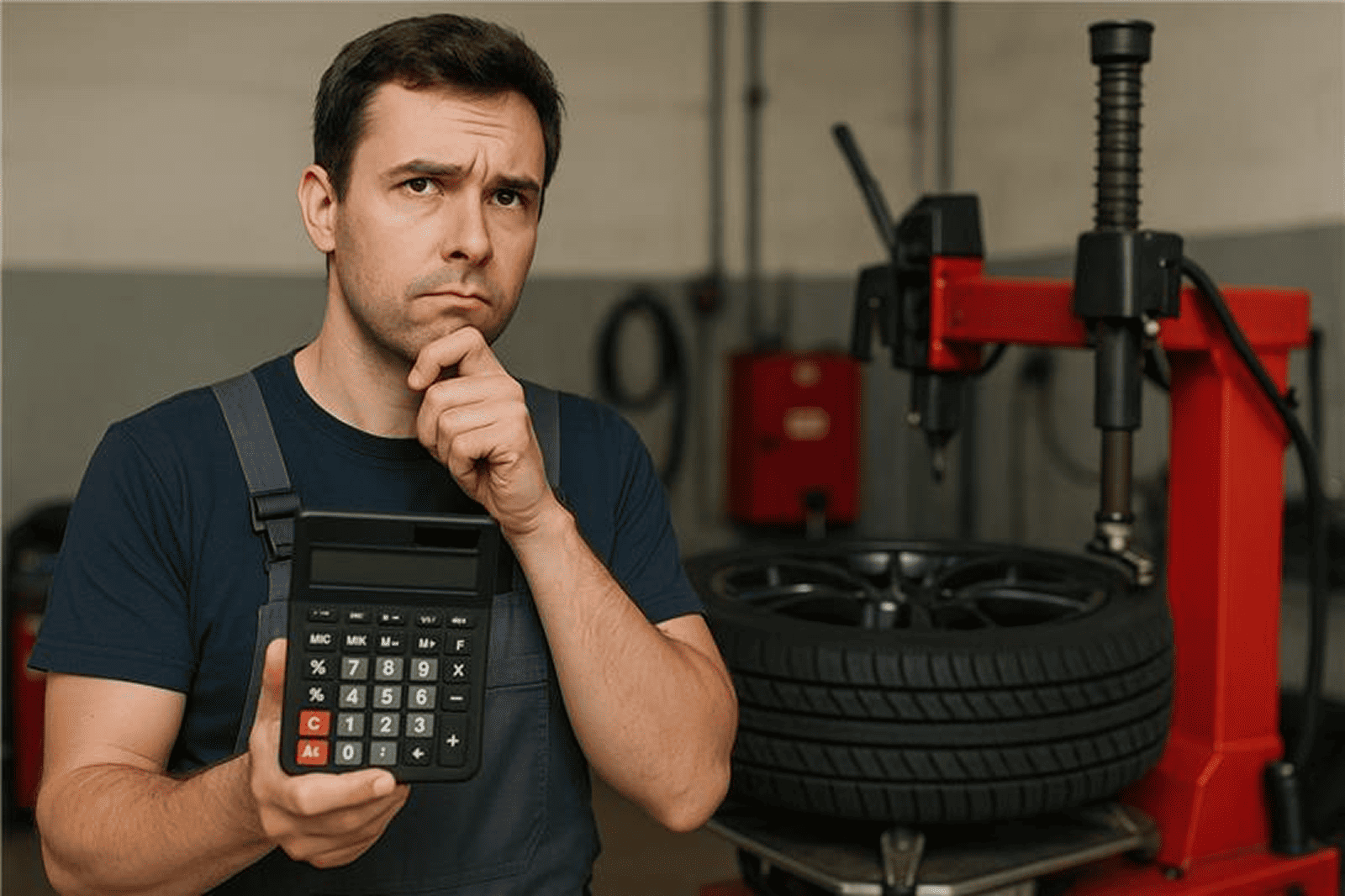We use cookies to make your experience better. To comply with the new e-Privacy directive, we need to ask for your consent to set the cookies. Read our Privacy and Cookie Policy.

Investing in a tyre changing machine for sale is a major decision for any repair shop. To justify the cost, you need to understand how quickly the machine will pay for itself. Here’s how to calculate return on investment (ROI) and what factors influence the payback period.
What impacts tyre changer ROI?
ROI goes beyond sticker price. It reflects how new equipment affects throughput, labour efficiency, technician satisfaction and revenue.
- Labour time saved per job – Modern machines can cut the time it takes to mount and balance a set of tyres by as much as 20 minutes. If your old machine takes 10–12 minutes per tyre, a high‑performance changer may reduce this to 5–6 minutes, freeing up your technician to take on additional jobs.
- Avoided damage costs – Cheap or worn‑out machines often cause rim scratches, damaged sensors and rework. Premium equipment with protective jaws and bead depressors minimises these costs.
- Increased job capacity – Saving 20 minutes per set means you can fit in an extra vehicle or two each day, boosting revenue.
- Technician morale and retention – Good technicians prefer modern tools that reduce physical strain. A happier workforce reduces turnover and training costs.
Using an ROI calculator
To estimate payback time, plug these values into an ROI calculator:
- Number of tyre jobs per day
- Revenue per job
- Labour rate per hour
- Minutes saved per job
- Cost of the new machine
For example, with eight jobs per day, £100 revenue per job, a labour rate of £75 per hour, 20 minutes saved per job and a machine cost of £10,000, you could save over £50 per day in labour alone. Adding one extra job daily shortens the payback period to under six months.
Factors affecting payback
- Volume – More tyre changes per day lead to faster ROI.
- Time savings – Greater improvements from your current machine mean quicker returns.
- Revenue per job – Higher rates reduce payback time.
- Downtime reduction – Fewer breakdowns mean more uptime and profit.
Why premium machines deliver faster ROI
High‑end machines reduce manual effort and protect wheels. Features like simultaneous processes, rim protection and durable construction let technicians follow consistent steps on any tyre. When paired with service plans and training, these machines stay productive and earn money rather than sitting idle.
Want to evaluate models before you invest? Read our guide on choosing the right tyre changer. To browse our full range of tyre changers, visit the product page. Understanding both features and ROI will help you make the best decision for your garage.



